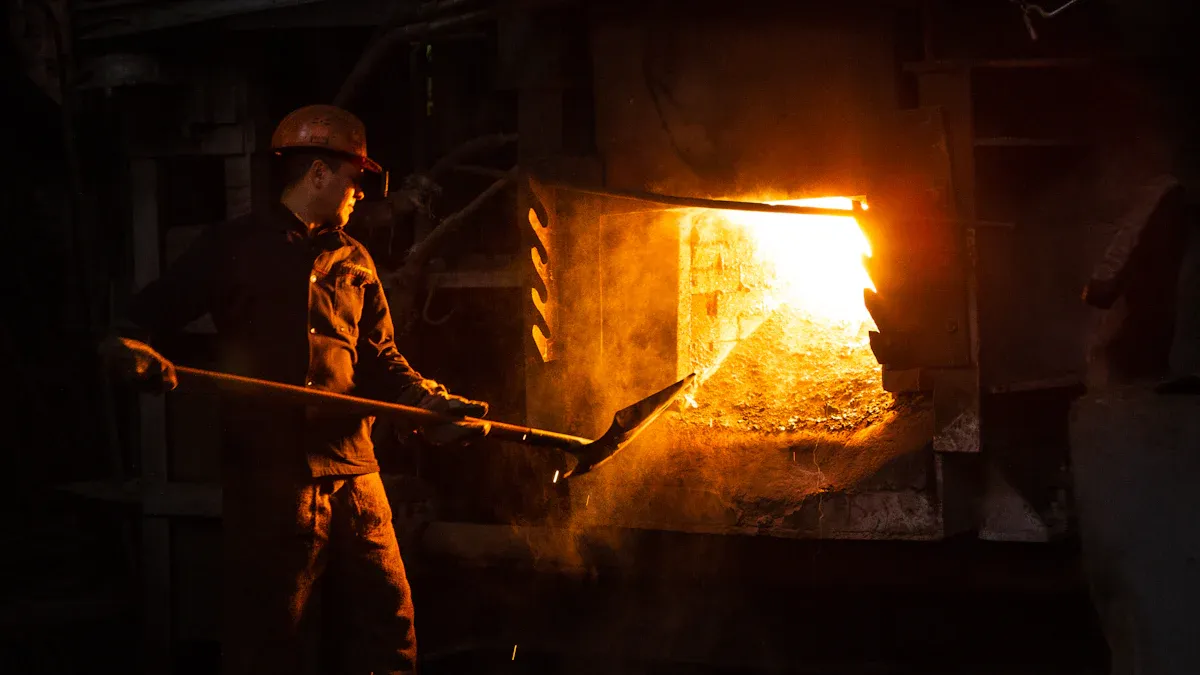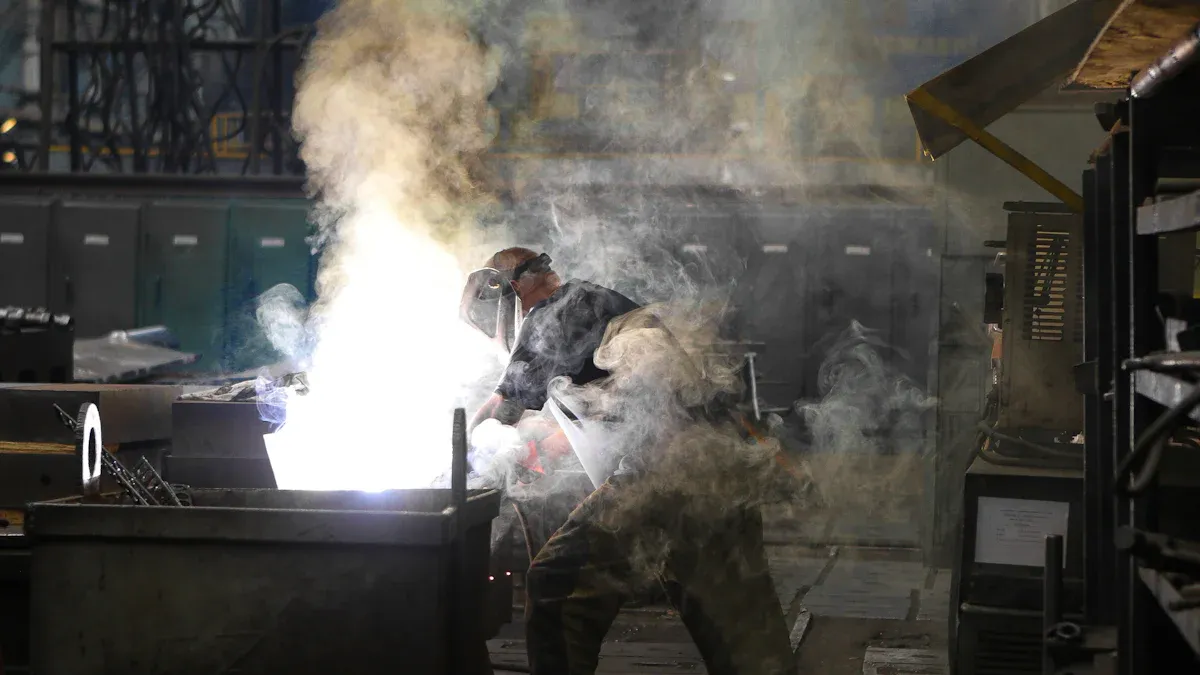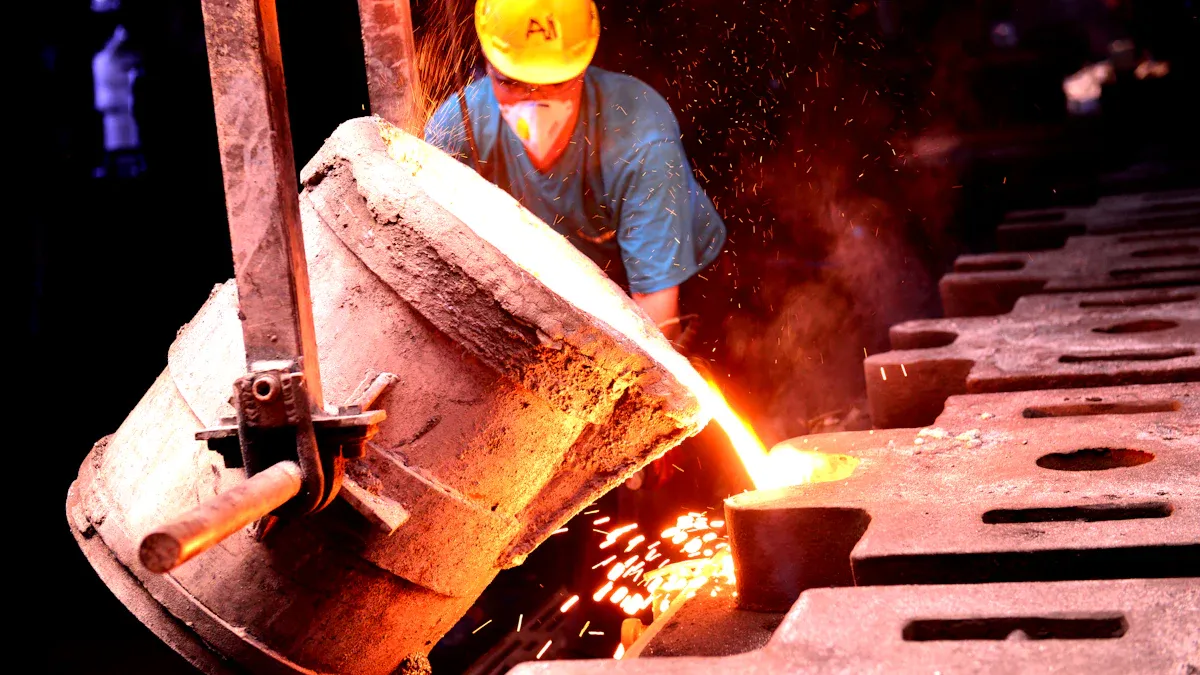
In high-abrasion environments, you need a solution that prevents excessive wear and tear on industrial components. SIC coating provides a hard, wear-resistant surface that protects tools and machinery from damage. This advanced coating reduces maintenance needs while extending the lifespan of equipment. Its application has become vital in metallurgy, where durability and efficiency are crucial.
Key Takeaways
- SIC coating is very hard and stops tools from wearing out. It protects machines in rough working areas.
- Using SIC coating saves money by making equipment last longer. It lowers the need for fixing or replacing them often.
- SIC coating works in many industries and performs well in tough jobs.
Key Properties of SIC Coating

Hardness and Wear Resistance
SIC Coating stands out for its exceptional hardness. This property makes it highly resistant to wear and tear, even in the most abrasive environments. When you apply this coating to industrial tools or machinery, it creates a tough barrier that protects the underlying material. This means your equipment can handle heavy-duty tasks without degrading quickly.
For example, in industries like mining or metalworking, tools often face constant friction and impact. Without proper protection, these tools wear down rapidly. SIC Coating prevents this by acting as a shield, ensuring your tools last longer and perform better. Its hardness also reduces the need for frequent replacements, saving you time and money.
Thermal and Chemical Stability
Another key feature of SIC Coating is its ability to withstand extreme temperatures and harsh chemicals. Many industrial processes involve high heat or exposure to corrosive substances. These conditions can weaken or damage unprotected materials. However, SIC Coating remains stable under such stress.
You can rely on this coating to maintain its integrity in heat-intensive environments, such as smelting or forging operations. It also resists chemical reactions, making it ideal for processes involving acids, alkalis, or other corrosive agents. This stability ensures that your equipment stays functional and reliable, even in challenging conditions.
Surface Protection and Low Friction
SIC Coating not only protects surfaces but also reduces friction. Its smooth finish minimizes resistance between moving parts, which helps improve efficiency. When machinery operates with less friction, it consumes less energy and generates less heat. This can lead to better performance and lower operational costs.
In addition, the coating prevents surface damage like scratches or pitting. This is especially important for tools and components that require precision. By maintaining a smooth and intact surface, SIC Coating ensures consistent performance and extends the lifespan of your equipment.
Applications of SIC Coating in Metallurgy

High-Abrasion Tools and Equipment
In metallurgy, tools and equipment often face intense wear due to constant exposure to abrasive materials. You can use SIC coating to protect these tools, ensuring they remain durable and efficient. This coating creates a hard, wear-resistant layer that shields surfaces from damage caused by friction and impact. For instance, cutting tools, grinding wheels, and drill bits benefit greatly from this added protection.
Tip: Applying SIC coating to your tools not only extends their lifespan but also improves their performance in demanding environments.
By reducing wear, SIC coating minimizes the need for frequent replacements. This helps you save on costs and reduces downtime in your operations. Whether you’re working with heavy-duty machinery or precision tools, this coating ensures consistent results and long-term reliability.
Mining and Smelting Operations
Mining and smelting processes involve some of the harshest conditions in the metallurgy industry. Equipment in these operations must endure abrasive particles, high temperatures, and corrosive substances. SIC coating provides an ideal solution for these challenges. It protects mining tools, conveyor belts, and smelting components from wear and corrosion.
For example, in mining, drills and excavation tools encounter constant friction from rocks and minerals. Without proper protection, these tools degrade quickly. SIC coating acts as a barrier, allowing them to perform efficiently for longer periods. Similarly, in smelting, where molten metals and extreme heat are common, this coating ensures that equipment remains stable and functional.
Note: By using SIC coating in mining and smelting, you can enhance the durability of your equipment and reduce maintenance costs.
Heat-Intensive and Corrosive Processes
Many metallurgical processes involve extreme heat and exposure to corrosive chemicals. These conditions can weaken unprotected materials, leading to equipment failure. SIC coating offers exceptional thermal and chemical stability, making it perfect for such environments.
You can apply this coating to components like furnace linings, heat exchangers, and chemical processing equipment. Its ability to withstand high temperatures ensures that your machinery operates smoothly, even under intense heat. Additionally, its resistance to acids, alkalis, and other corrosive agents prevents chemical damage.
A good example is its use in forging operations, where tools must endure both heat and pressure. SIC coating ensures these tools maintain their integrity, reducing the risk of breakdowns. This not only improves efficiency but also ensures safety in your operations.
Advantages of SIC Coating Over Alternative Materials
Comparison with Tungsten Carbide and Ceramics
When comparing SIC Coating to materials like tungsten carbide and ceramics, you’ll notice significant differences in performance. Tungsten carbide offers excellent hardness but struggles with thermal stability in extreme heat. Ceramics, while resistant to high temperatures, can be brittle and prone to cracking under heavy impact. SIC Coating combines the best of both worlds. It provides exceptional hardness and wear resistance while maintaining stability in high-temperature environments. This makes it a more reliable choice for tools and equipment exposed to harsh conditions.
Cost-Effectiveness and Longevity
SIC Coating stands out as a cost-effective solution for industrial applications. Its durability reduces the need for frequent replacements, saving you money over time. Unlike some alternative materials, which may require constant maintenance or early replacement, SIC Coating ensures your equipment lasts longer. This longevity translates to fewer interruptions in your operations, helping you maintain productivity. By investing in this coating, you gain a long-term solution that minimizes costs and maximizes efficiency.
Versatility in Industrial Applications
The versatility of SIC Coating makes it suitable for a wide range of industrial uses. You can apply it to tools, machinery, and components across various sectors, including mining, metallurgy, and chemical processing. Its ability to withstand abrasion, heat, and corrosion ensures consistent performance in diverse environments. Whether you need to protect cutting tools, furnace linings, or conveyor belts, this coating adapts to your specific needs. Its flexibility allows you to enhance the durability and efficiency of your equipment, regardless of the application.
Future Trends in SIC Coating Technology
Advances in Deposition Methods
You can expect significant improvements in how SIC Coating is applied to surfaces. New deposition methods, such as plasma-enhanced chemical vapor deposition (PECVD), are making the process faster and more precise. These techniques allow you to create thinner, more uniform coatings that enhance performance. They also reduce waste during application, which lowers production costs.
Another exciting development is the use of additive manufacturing, or 3D printing, to apply SIC Coating. This approach lets you coat complex shapes and intricate designs with ease. It opens up possibilities for creating custom tools and components that are both durable and efficient.
Hybrid Coatings for Enhanced Performance
Hybrid coatings combine SIC Coating with other materials to improve performance. For example, researchers are blending silicon carbide with diamond-like carbon or graphene to create coatings with superior hardness and thermal conductivity. These hybrid solutions give you the benefits of multiple materials in a single layer.
You can use hybrid coatings to tackle specific challenges in metallurgy. For instance, they work well in environments where extreme heat and abrasion occur simultaneously. By combining materials, these coatings offer better protection and longer lifespans for your equipment.
Sustainability and Cost Reduction
Sustainability is becoming a priority in industrial applications. SIC Coating technology is evolving to meet this demand. Manufacturers are exploring eco-friendly deposition methods that use less energy and fewer harmful chemicals. These advancements help you reduce your environmental impact while maintaining high-quality results.
Cost reduction is another focus. Innovations in production processes are making SIC Coating more affordable. For example, automated systems are streamlining application, which lowers labor costs. These improvements ensure that you can access durable and efficient coatings without exceeding your budget.
SIC Coating plays a vital role in reducing wear in high-abrasion environments. You can rely on its durability and efficiency to protect tools and machinery from damage. Its advantages over alternative materials make it indispensable in metallurgy. Future innovations promise to expand its applications, offering even greater benefits for industrial processes.
FAQ
What makes SIC coating better than traditional coatings?
SIC coating offers superior hardness, thermal stability, and chemical resistance. It lasts longer and performs better in high-abrasion environments compared to traditional coatings.
Can SIC coating be applied to all types of tools?
You can apply SIC coating to most tools and machinery. However, compatibility depends on the material and application process. Consult a professional for specific requirements.
How does SIC coating reduce maintenance costs?
SIC coating minimizes wear and tear, extending the lifespan of equipment. This reduces the need for frequent repairs or replacements, saving you time and money.
Tip: Regularly inspect coated tools to ensure optimal performance and longevity.


